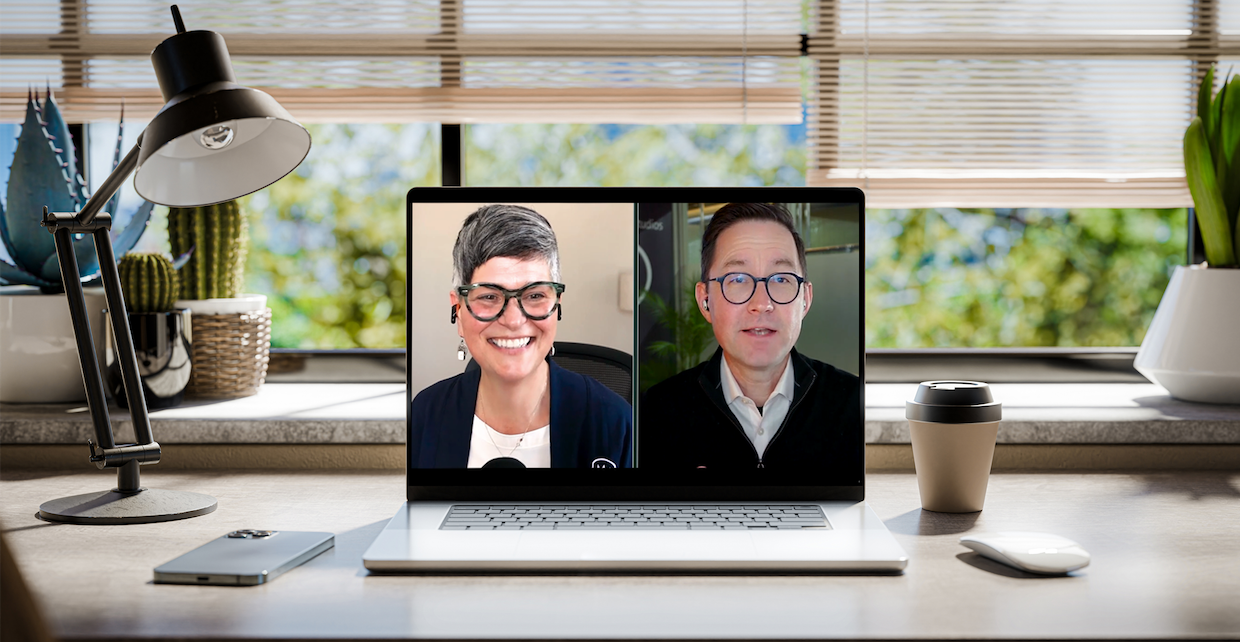[Review] Co-Intelligence: Living and Working with AI by Ethan Mollick
Written by
A jagged frontier. An invisible wall. A helpful alien that wants to make you happy.
Like many marketing professionals, I've spent the last year+ diving into artificial intelligence (AI) tools and how they are changing our profession. So of course when it was published this spring I quickly read Professor Ethan Mollick's latest book, Co-Intelligence: Living and Working with AI. In it, he lays out the general contours of this new landscape and beckons the reader to get familiar with it. Because it’s the AI era now, like it or not.
Professor Mollick’s metaphors, real-world use cases, and foreseeable scenarios do the world-building work of a storyteller, but this isn’t science fiction. It’s artificial intelligence, and it’s accessible to billions of people through large language models (LLMs) like those used by ChatGPT, Claude, and Meta AI.
Technical capabilities are increasing faster than our brains can comprehend. AI technology is an accelerator — and if used for nefarious purposes, it could become an accelerant. Humans can’t keep up with it — and that’s a feature, not a bug.
All the more reason to learn about it right now, while it’s the least sophisticated AI you’ll ever use. That may be the most compelling message in the book, but it’s certainly not the only useful takeaway for marketers.
Why Marketers Need to Learn How to Use AI Now
Mollick makes a strong case for understanding how this technology works, whether you’re an enthusiastic adopter or an unconvinced skeptic. AI is already transforming the marketing landscape — and in fact, a marketer’s work is such a balance of data analysis and creative synthesis that it’s easy to understand why people in our field are feeling unsettled.
So, will AI impact your job? Mollick’s answer is a likely yes—but there’s a wide gap between having an impact and taking it over, and part of the difference is in learning how to make smart use of the technology. Here are Mollick’s four roles for working with AI:
- Always invite AI to the table: AI should be integrated into workflows where its strengths can be leveraged. In the beginning, it can be helpful to approach every task with the question, “Which parts of this task may be well-suited to AI?” or “What could I improve through quicker iteration or data analysis?”
- Be the human in the loop: Your role is to oversee and validate the AI’s outputs by critically assessing it for correctness. That means never handing the reins over entirely to the AI; to be successful, that means leaning into professional growth and development to become the in-demand expert and critical thinker AI can’t replace.
- Treat AI like a person, but tell it what kind of person it is: To get the most useful output, give the AI a clear context for the outputs you need. The more detail and insight you can provide in a prompt, the better the AI can make the appropriate language-token predictions to generate useful outputs for your task.
- Assume it’s the worst AI you’ll ever use: As its capabilities grow, today’s AI will seem primitive in hindsight. By understanding and starting to use it today, you get the maximum opportunity to increase your sophistication as the technology advances over time.
Mollick introduces a helpful metaphor, contrasting human users as cyborgs or centaurs, describing different approaches to AI adoption. The most successful users, or cyborgs, work back-and-forth blending human and AI tasks seamlessly, while “centaurs” maintain a clearer division between their roles. He notes, “In field after field, we are finding that a human working with an AI co-intelligence outperforms all but the best humans working without an AI.”
Unless you’re one of those rare professionals at the pinnacle of industry thought leadership — and in fact, even if you are — there’s a good chance you can improve your work with an AI tool.
AI excels at tasks like data analysis, content generation, and personalization, which can save huge amounts of time and provide insights humans might overlook. Yet, human critical thinking is absolutely necessary for strategic planning, creative direction, and tasks that call for emotional intelligence.
To remain the human in the loop, marketers need to learn how to use AI as a tool to enhance our work: generating more content ideas and combining ideas in new ways, optimizing campaigns, and automating repetitive tasks. But no AI output should go without human review, revision, and approval to ensure the content is true and correct, and that it aligns with the brand’s voice, goals, values, and quality standards.
Leveraging AI’s strengths while maintaining human oversight allows marketers to do more execution with less effort, which can expand reach, improve targeting, and drive better results. What we do with the time it saves us may, in part, determine our future success as AI-enabled marketers.
AI’s Weaknesses as a Human Replacement Can Be Strengths in a Tool for Human Workers
Because AI is human-made, it carries human biases, and the "alien mind" of artificial intelligence must be aligned with our interests, ethics, and morality. Marketers, as knowledge workers expected to be impacted by AI earlier than many others, have the unique responsibility and opportunity to set the expectations for ethical usage.
Mollick warns about AI’s notorious tendency to “hallucinate,” or fabricate convincing but false output, especially when it’s given limited information. Its authoritative voice and delivery can present false information a little too convincingly unless an expert’s in the loop to verify the output.
On one hand, it’s a major liability for content creators and marketers striving to be accurate and helpful. On the other, the hallucination risk highlights AI’s potential as a creative tool. Its capabilities, after all, are based on finding the connections between disparate or seemingly unconnected concepts — one of the main ways innovation happens.
Mollick makes the case for individuals to explore AI capabilities and experiment with use cases and applications in their own job-related tasks, rather than rely on organizational initiatives to drive adoption. Innovation, he explains, is slow, cumbersome, and expensive at the organizational level, while it’s faster, easier, and cheaper for an individual user to test and iterate using their real-life work tasks.
Ethical and Practical Imperatives of Co-Intelligence
“You can no longer trust that anything you see, or hear, or read was not created by AI. All of that already happened. Humans, walking and talking bags of water and trace chemicals that we are, have managed to convince well-organized sand to pretend to think like us.” — Ethan Mollick, Co-Intelligence: Living and Working with AI
Mollick’s insights emphasize a critical point: AI’s potential to revolutionize marketing (and many other industries) is complicated by its capacity for unintended consequences. Marketers and other knowledge workers are among the first to feel the impact of AI’s influence; we have a responsibility to use it wisely and set standards for ethical use.
Mollick’s four rules offer practical guidance for integrating AI into our workflows in responsible ways that make the most of its creative potential.
AI’s limitations shouldn’t dissuade us from looking for all the ethical ways we might use it. At the same time, we can’t stand by paralyzed by its expanding and improving capabilities and simply watch tasks migrate from humans’ responsibility to automation. Instead, marketers should take Mollick’s advice to view AI as the creative, helpful coworker it can be — and to focus on growing our individual human expertise to be relevant as humans in the loop.
Maybe most important, keeping in mind the technology behind the tools can help users be aware and intentional about our AI use. This insight will only grow in importance as we navigate the increasingly intertwined relationship between human intelligence and machine intelligence.
If you haven’t already, get familiar with the growing list of helpful AI tools in HubSpot and beyond in our AI Resources page. Click below to get started now.
Subscribe To Our Blog
Information. Insights. Ideas. Get notified every time a new Weidert Group blog article is published – subscribe now!
You May Also Like...

Artificial Intelligence
AI, Analytics & Content: Right-Now Strategies with Andy Crestodina

Artificial Intelligence
Revenue-Driving B2B Content Marketing Strategy with Andy Crestodina

Artificial Intelligence
AI Agents Are Here—How Smart Businesses Are Using Them Now
Accelerate Your Growth with
Weidert Group
If you’re ready to explore a partnership, request a personalized consultation with our team.

